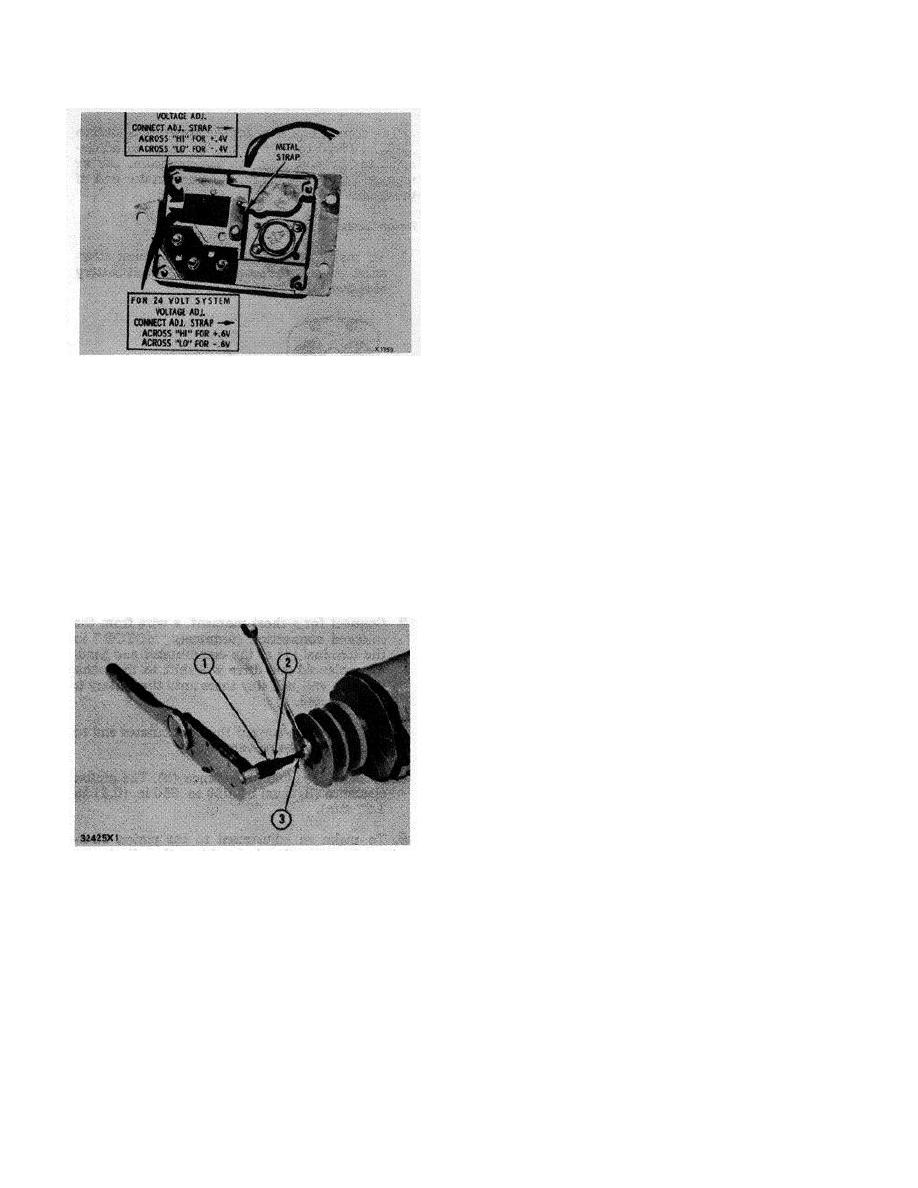 |
|||
|
|
|||
|
Page Title:
Pinion Clearance Adjustment (Delco-Remy) |
|
||
| ||||||||||
|
|
 ELECTRICAL SYSTEM
TESTING AND ADJUSTING
NOTE: Make reference to Special Instruction
Alternator Regulator (Motorola)
(GEG02276) and to the instructions inside of the cover
of the tester, when testing with the 5P300 Electrical
Tester.
Use a D. C. Voltmeter to find starting system
components which do not function.
Move the starting control switch to activate the
starter solenoid. Starter solenoid operation can be
heard as the pinion of the starter motor is engaged with
the ring gear on the engine flywheel. The solenoid
operation also closes the electric circuit to the motor.
Connect one lead of the voltmeter to the solenoid
connection (terminal) that is fastened to the motor. Put
the other lead to a good ground. Activate the starter
solenoid and look at the voltmeter. A reading of battery
voltage shows the problem is in the motor. The motor
REGULATOR ADJUSTMENT
must be removed for further testing. No reading on the
voltmeter shows that the solenoid contacts do not close.
To make an increase to the voltage (approximately
This is an indication of the need for repair to the
.4 volt on a 12 volt system or .6 volt on a 24 volt
solenoid or an adjustment to be made to the starter
system) remove the locknuts from the two terminals that
pinion clearance. Pinion clearance for Delco-Remy
are nearer the word "HI" than the other terminals. Put
starters is .36 in. (9.1 mm). Pinion clearance for the
the metal strap over these terminals, put the locknuts on
Prestolite starter is .020 to .050 in. (0.51 to 1.27 mm).
the terminals and tighten the locknuts.
If the solenoid for the starting motor will not operate,
To make the voltage lower (approximately .4 volt on
it is possible that the current from the battery is not
a 12 volt system and .6 volt on a 24 volt system) put the
getting to the solenoid.
Fasten one lead of the
metal strap on the two terminals nearer the word "LO".
voltmeter to the connection (terminal) for the battery
cable on the solenoid. Put the other lead to a good
Alternator: Pulley Nut Tightening (Delco-Remy)
ground. No voltmeter reading shows there is a broken
circuit from the battery. Further testing is necessary
when there is a reading on the voltmeter.
Further test by fastening one voltmeter lead to the
connection (terminal) for the small wire at the solenoid
and the other lead to the ground. Look at the voltmeter
and activate the starter solenoid. A voltmeter reading
shows that the problem is in the solenoid. No voltmeter
reading shows that the problem is in the starter switch or
wiring. Fasten one lead of the voltmeter to the battery
wire connection of the starter switch and put the other
lead to a good ground. A voltmeter reading indicates a
failure in the switch.
A starting motor that operates too slow can have an
overload because of too much friction in the engine
ALTERNATOR PULLEY INSTALLATION
being started. Slow operation of the starting motor can
also be caused by shorts, loose connections, and/or dirt
1. 8S1588 Adapter (1/2" female to 3/8" male). 2. 8S1590
in the motor.
Socket (5/16"-3/8" drive). 3. 1P2977 Tool Group. 8H8555
Socket (15/16"-1/2" drive) not shown.
Pinion Clearance Adjustment (Delco-Remy)
Tighten nut holding the pulley to a torque of 60 5
Whenever the solenoid is installed, make an
lb. ft. (8.3 0.7 mkg) with the tools shown.
adjustment of the pinion clearance. The adjustment can
be made with the starting motor removed.
STARTING SYSTEM
Tools
Needed:
5P300
Electrical
Tester.
83
|
|
Privacy Statement - Press Release - Copyright Information. - Contact Us |